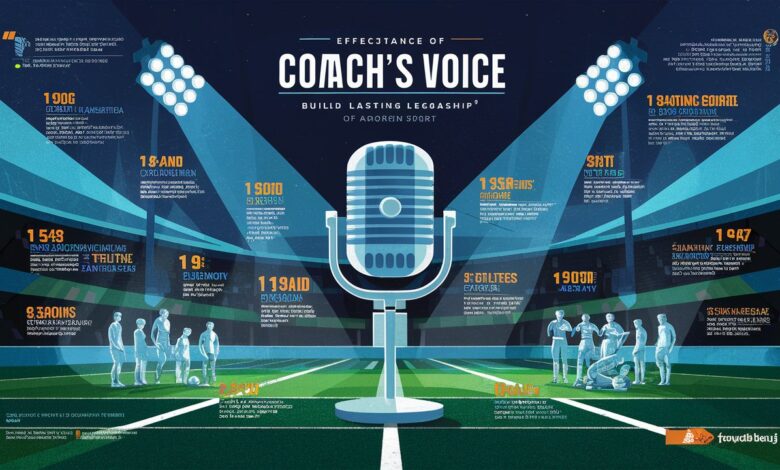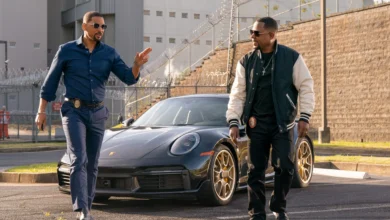The Coach’s Voice: Leadership Strategy and Legacy in Modern Sports

Introduction: The Power of the Coach’s Voice
The coach’s voice is more than a set of instructions—it is the heartbeat of a team, the catalyst for transformation, and the bridge between potential and greatness. In modern sports, coaches are not just tacticians but visionaries, mentors, and leaders who shape the culture, mindset, and performance of their athletes. This article explores the multifaceted role of coaches, dissecting their methodologies, philosophies, and the indelible marks they leave on their teams. From fostering resilience to mastering strategy, we’ll delve into what makes a coach’s voice resonate beyond the sidelines.
1. The Role of a Coach: Beyond the Playbook
A coach’s primary responsibility extends far beyond drawing up plays or drilling techniques. They are architects of culture, tasked with instilling values like discipline, accountability, and teamwork. Great coaches balance leadership with empathy, recognizing that their athletes are individuals with unique motivations and challenges. They create environments where failure is a learning tool and success is a collective achievement. This section examines how coaches like Pep Guardiola or Becky Hammon blend emotional intelligence with tactical rigor to inspire loyalty and excellence.
2. Building a Coaching Philosophy: Vision Meets Execution
Every iconic coach is defined by a coaching philosophy—a guiding set of principles that informs their decisions. Whether it’s Sir Alex Ferguson’s relentless focus on youth development or Pat Summitt’s “Definite Dozen” rules, these philosophies act as North Stars. Developing a philosophy requires introspection: What values matter most? How do you adapt to evolving challenges? This section breaks down how coaches articulate their vision and translate it into actionable strategies, ensuring consistency even in high-pressure scenarios.
3. Effective Communication: The Art of the Coach’s Voice
A coach’s ability to communicate determines their impact. Effective communication involves clarity, timing, and adaptability. For example, halftime adjustments require concise, targeted feedback, while long-term development demands patient mentorship. Coaches like Gregg Popovich master the balance between blunt honesty and encouragement, knowing when to challenge and when to support. This segment explores techniques such as active listening, nonverbal cues, and tailoring messages to individual athletes’ needs.
4. Tactical Knowledge vs. Human Connection: Striking the Balance
While tactical knowledge is critical—understanding formations, analytics, and opponent weaknesses—the human element separates good coaches from legendary ones. Jurgen Klopp’s infectious passion and Phil Jackson’s mindfulness practices highlight how emotional bonds elevate performance. This section argues that the best coaches marry analytical rigor with emotional investment, creating teams that are both strategically sound and psychologically resilient.
5. Managing Team Dynamics: Conflict, Chemistry, and Culture
Teams are microcosms of society, with clashing personalities, ambitions, and egos. A coach’s voice must navigate these dynamics, fostering team chemistry while addressing conflicts head-on. Case studies, such as Steve Kerr’s handling of the Warriors’ superstar-laden roster, reveal how transparency and inclusivity build trust. This part discusses strategies for resolving disputes, setting boundaries, and cultivating a culture where every member feels valued.
6. Adaptability: Thriving in an Ever-Changing Landscape
The modern coach faces unprecedented challenges: evolving technologies, athlete activism, and globalized competitions. Adaptability is no longer optional—it’s survival. Coaches like Sarina Wiegman, who led England’s Lionesses to Euro 2022 glory, exemplify flexibility in tactics and mindset. This section explores how continuous learning, openness to innovation, and embracing diversity keep coaches relevant in a dynamic industry.
7. Mentorship and Legacy: Coaching Beyond the Game
A coach’s influence often outlasts their tenure. Through mentorship, they shape not just athletes but future leaders. Consider John Wooden’s “Pyramid of Success,” which remains a life guide for millions. This final section reflects on how coaches invest in personal growth, advocate for social causes, and leave legacies that transcend wins and losses.
Conclusion: The Eternal Echo of the Coach’s Voice
The coach’s voice is timeless. It echoes in the confidence of a rookie scoring their first goal, the unity of a team overcoming adversity, and the lives transformed by lessons learned on and off the field. By mastering leadership, communication, and adaptability, coaches don’t just build teams—they build futures.
Frequently Asked Questions (FAQs)
Q1: What distinguishes a “player’s coach” from a “disciplinarian”?
A player’s coach prioritizes empathy and open dialogue, fostering a collaborative environment (e.g., Carlo Ancelotti). Disciplinarians emphasize structure and accountability (e.g., Vince Lombardi). Both styles can succeed but require alignment with team culture.
Q2: How do coaches handle the pressure of high-stakes games?
Preparation and mindset are key. Many coaches use routines like film analysis, mindfulness, or trusting their philosophy to stay composed.
Q3: Can coaching success be measured beyond trophies?
Absolutely. Development of athletes, cultural impact, and long-term program sustainability are equally vital metrics.
Q4: What’s the biggest mistake new coaches make?
Overemphasizing tactics while neglecting relationships. Trust is the foundation of execution.
Q5: How can someone become a coach without prior playing experience?
Focus on education (certifications, clinics), apprentice under experienced mentors, and leverage strengths like analytical skills or communication.
This article merges theory with real-world examples, offering a roadmap for aspiring coaches and a tribute to the enduring power of the coach’s voice.



